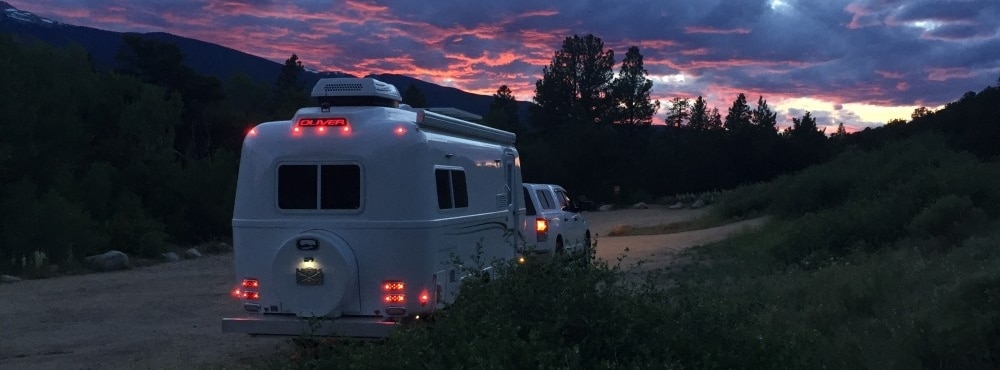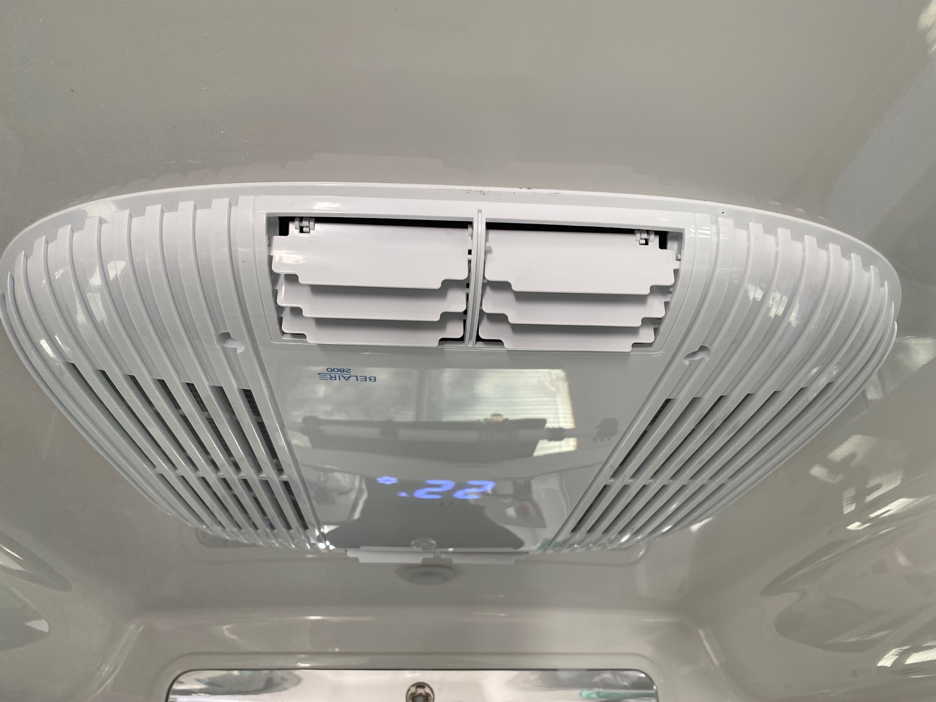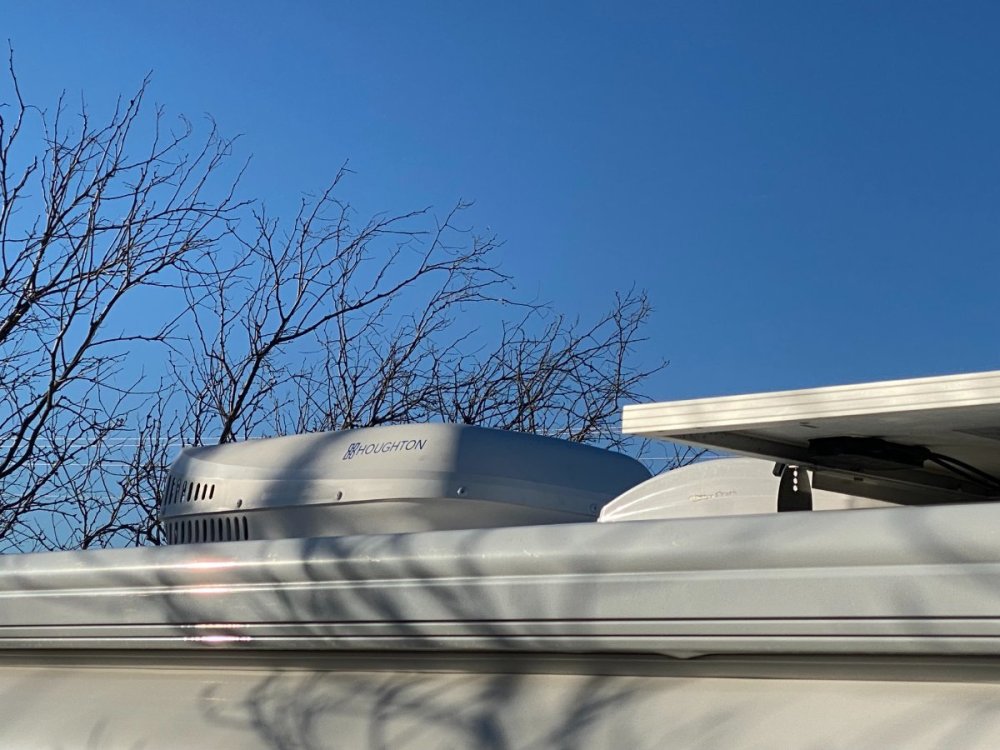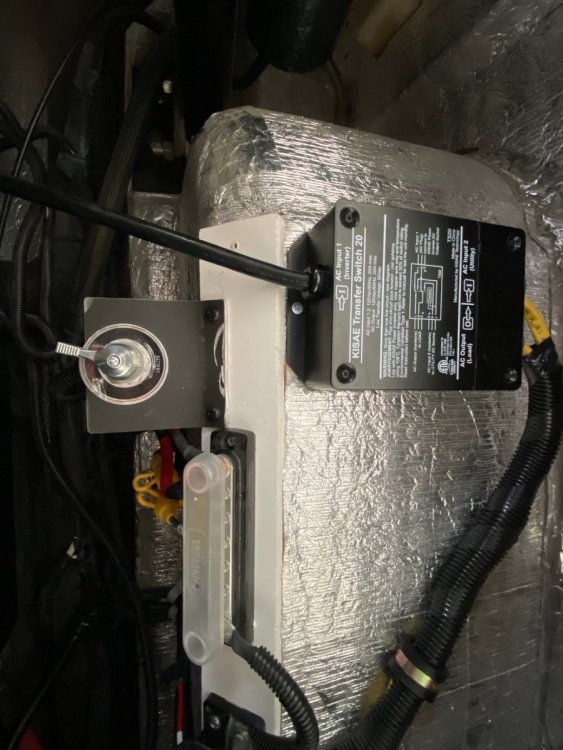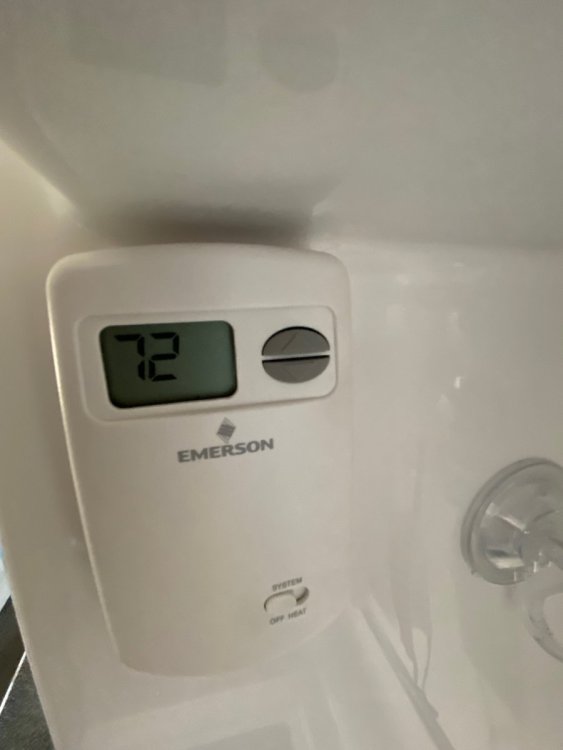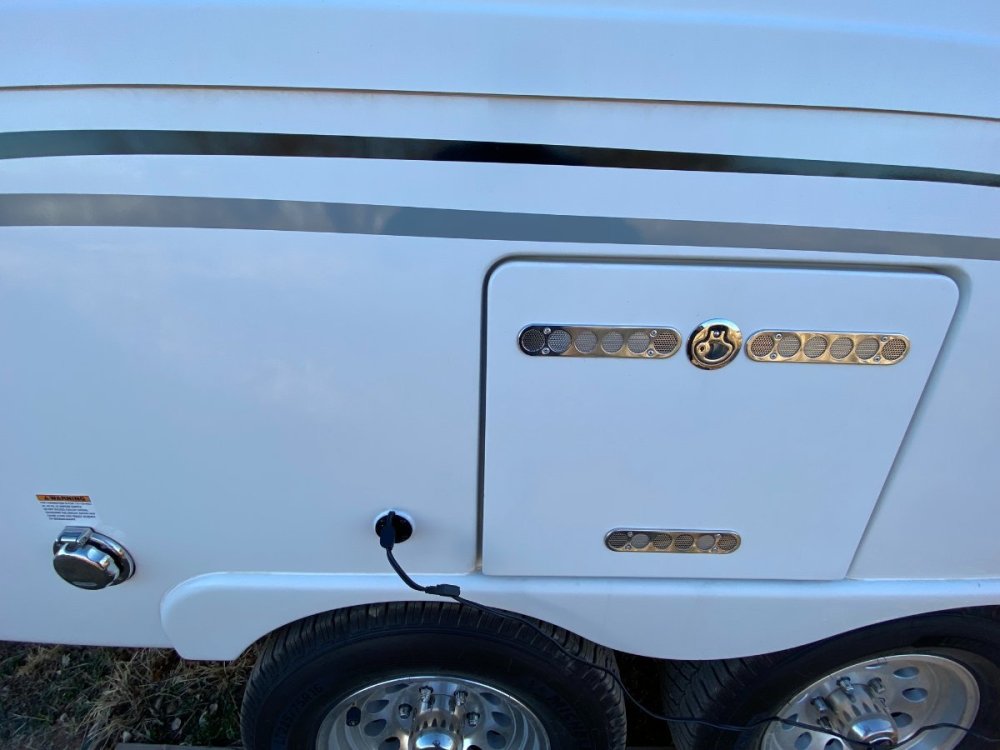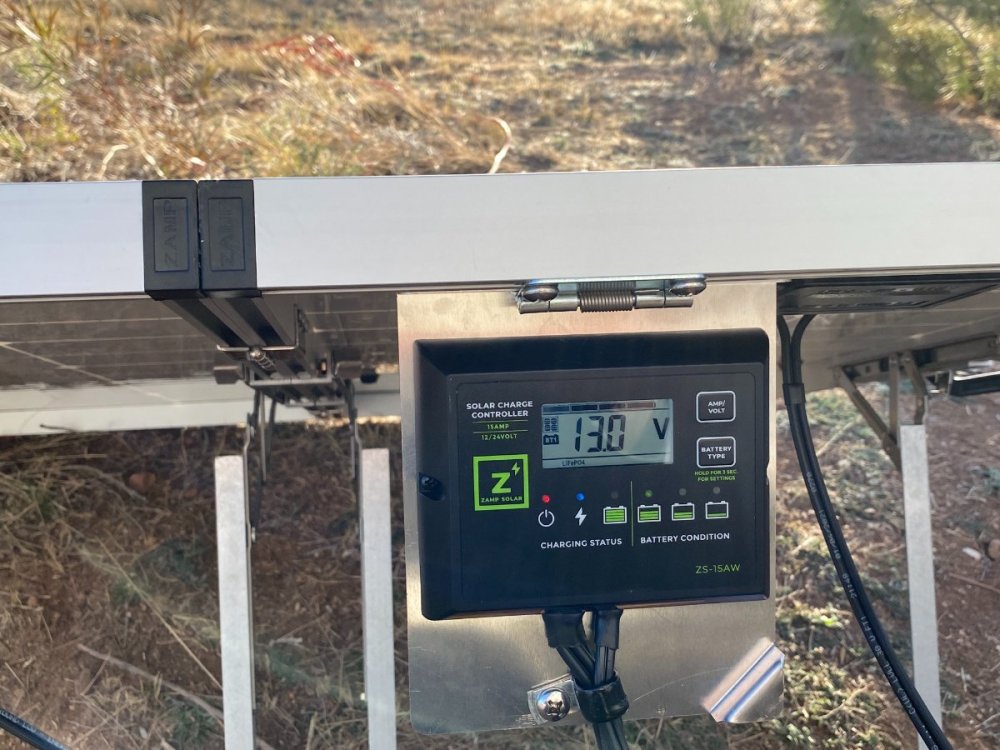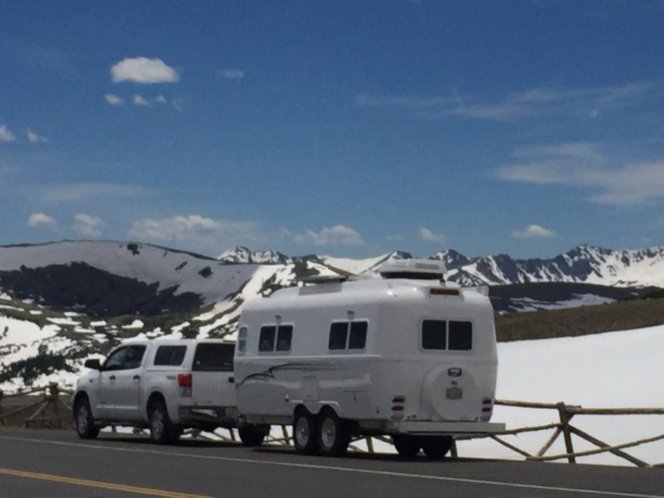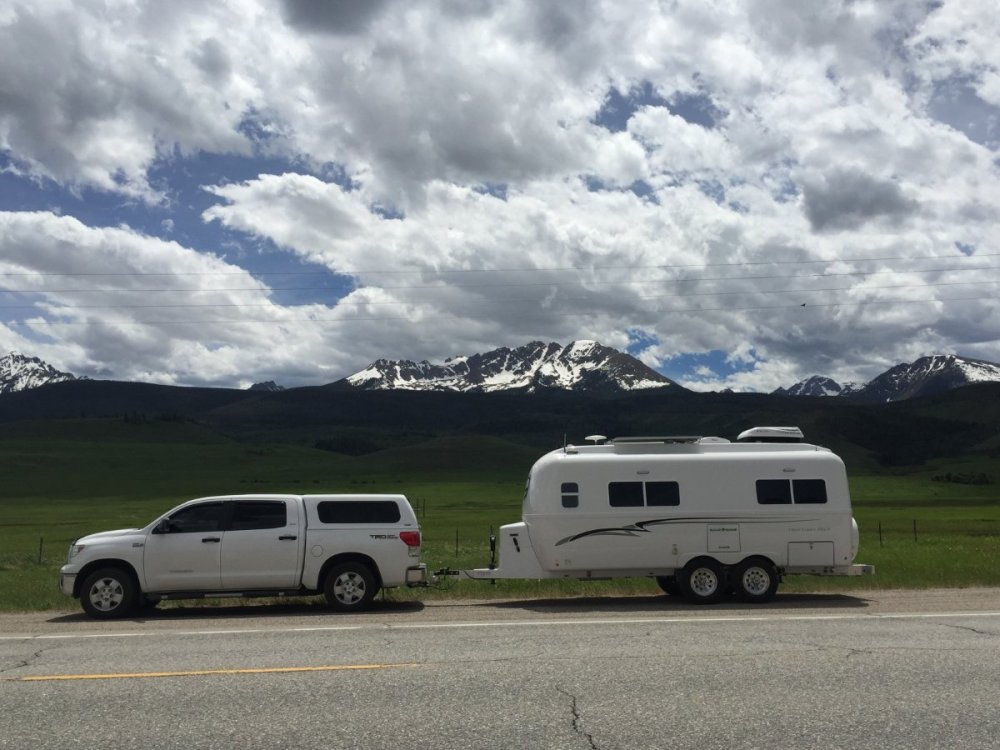-
Posts
294 -
Joined
-
Last visited
-
Days Won
11
Everything posted by Spike
-
With the help of a number of good folks on this forum and my great RV Tech, Mathew Gonzales, who has worked on my 2017 Elite II since I brought in home to SE AZ, I finally achieved my goal of being able to run my AC off of my 2000-watt inverter and my new battery bank: 4 100ah Battle Born lithium batteries. After asking for, and getting, advice from folks on the forum about a number of issues that Mat and I ran encountered when attempting this upgrade, I made these decisions and Mat did this work: I first made the decision to purchase the Houghton 9.5K Low Profile Air Conditioner from RecPro--due mainly to how much quieter it runs compared to the Dometic Penguin that came with my Ollie, and to its lower amp draw (10 vs. the 16 for the Dometic). I learned that the Houghton could be run off of the 2000-watt inverter that came with my Ollie, using a transfer switch plugged into it running to the AC. I asked Mat to move the Micro-Air soft start previously installed in the Dometic to the Houghton. We discovered that he needed to reprogram the soft start to coordinate with the new AC. Since, unlike the Dometic set-up that came with my 2017 Ollie, the Houghton did not have a way to control the furnace, Mat installed and wired an Emerson non-programable thermostat--once again using information gleaned from folks on this forum--to control the furnace. I figured it was a good idea to supplement the 320-watt solar panels that came with my Ollie with a 180-watt Zamp solar panel kit. I also purchased a Zamp solar port that Mat installed near the shore power input. When my AGM batteries overheated last fall, I found I had no way to easily disconnect the battery bank. (This, I suspect, is something that is an original defect in the electrical system of my Oliver. Is it for all Olivers still?) So, while Mat was doing all of the other work, I had him install a battery disconnect switch near the inverter. I don't want this to appear as a straightforward process. It took a lot of back and forth between Mat and me trying to come up with solutions to problems encountered along the way. This back-and-forth involved a lot of advice from folks on this forum, some of whom I have not thanked by name. I would like to give special mention and thanks, however, to CnC and Minnesota Oli, who spent a good deal of time with me exchanging private messages. Man, were they patient with this technical novice! The outcome is that I now have a much quieter AC that runs off of my solar, batteries, and 2000-watt inverter. One can read elsewhere about the advantages of the Houghton. Mat told me, before I took my camper home, that he ran the Houghton for about four hours, supplementing the roof-top solar with the Zamp portable kit, and the voltage never dropped below 13 volts. I ran it when I brought the camper home, and verified that the system seemed to run the AC flawlessly AND much more quietly than before. I am delighted, as I have been wanting for a long time to be able to boondock in climes needing cooling of the cabin without having to resort to the hassle and noise of a generator. I will follow up with another post if I run into any issues. Disclaimer: I still have very little technical understanding about how this system functions and how the components and wiring fit together, so I will not be the one to answer many, if any, technical questions, but I know that on this forum, if you ask, you receive. There are some good posts on this forum involving the Houghton AC and related issues, so take a look around, and don't hesitate to submit your questions on this forum. Doing so paid off big time for me! Here is the interior view of my newly installed Houghton 9.5K Low Profile Air Conditioner: Here is an exterior view (birds won't be able to nest in this one!): Here is a photo of how Mat secured and wired the transfer switch and battery disconnect switch: Here is a photo of the Emerson non-programable thermostat to control the furnace (thanks go to John Davies who suggested the purchase): Here is a photo of the Zamp solar port with cord leading to the Zamp 180-watt portable solar panel kit: Here is a photo of the charge controller on my Zamp 180-watt portable solar panel kit, showing the voltage just after I plugged it in. (In less than 10 minutes, this controller and the interior Zamp showed the voltage up to 14.6 before dropping back into the floating voltage range.):
- 41 replies
-
- 24
-

-

-

-
Thanks again, Mossey. I will share your photos with my tech when I connect with him next week. The quirky readings are that, despite the system showing all of the parameters necessary for a synchronization, which the Victron information tells me is necessary to maintain correct readings, the monitor never displays that it has synchronized. In addition, although the readings from the Zamp controller inside the cabin and on the external Zamp controller on the 180-watt portable solar panels have revealed that the battery bank is full, the display tells me that it has been several days since a full charge. I'm hoping that my tech can straighten things out when I show him the advice, photos, and diagrams you and others have shared with me. Many thanks.
-
Mossey, here is my best attempt to photograph the battery bank and monitor area. Sorry about the battery-bank photos. Access is surely limited with the way in which my tech had to cram in the Battle Borns on their ends. I think that I understand that the problem with the monitor not registering the full charge when charged with the supplementary solar panels is that the shunt is not able to "see" the current along with the voltage. I suspect, however, that my tech still may not have wired the system correctly. Before I tried hooking up the supplementary 180-watt Zamp solar panels, the monitor never demonstrated that it had synced even when it showed that it had been fully charged--usually around 10AM. I hope these photos suffice in helping you identify the problem. Thanks. IMG_3245.HEIC IMG_3246.HEIC IMG_3247.HEIC IMG_3248.HEIC IMG_3249.HEIC IMG_3250.HEIC IMG_3244.HEIC IMG_3243.HEIC IMG_3242.HEIC IMG_3241.HEIC
-
Mossey, I think that I understand the bit about the placement of the solar panel alligator clips not engaging with the shunt. (My tech originally misplaced the wiring when he installed the system but corrected it after I discovered the problem.) Nonetheless, shouldn't the monitor at least register the battery voltage (up to 14.4 volts) and react accordingly? I will attempt to post photos tomorrow. Thanks a bunch for that link. I've bookmarked the site. I will explore it and possible post my issue there.
-
Thanks, mossemi. I am familiar with the Battle Born guidelines for the Victron monitor. I have double-checked my settings with a Dragonfly Energy (Battle Born manufacturer) representative, with whom I have spoken on the phone a couple of times now about the quirky readings. One issue is that the monitor shows no auto syntonizations which, according to the Victron manual, is needed to keep the monitor accurate. For several days, the monitor displayed that my battery bank was fully charged by my solar around 10:00 AM each morning even though it also showed that my batteries were less than 100%--diminishing about 1/2 percent each day. Also, the Zamp, SeeLevel, and Victron monitor most often displayed about 13.6 voltages in the middle of the day, which seems to be the standard reading for a full battery. The rep suggested that I manually set the monitor to 100%, which I did. I recently purchased a 180-watt portable solar system from Zamp, which I have connected (about four times now) to the batteries using the alligator clips. Within an hour or so, the monitor on the portable unit, the Victron monitor, and the Zamp monitor in the cabin all display about 14.4 volts before the monitor on the portable unit displays "FUL" and reveals that it is in float mode at about 13.8 volts. According to the Victron manual, this should cause the monitor to synchronize, but it has never displayed that it has done so. Also. now, in the last few days, the Victron monitor does not display that the batteries received a full charge. Even though all of the monitors reveal that the batteries have been fully charged one day, the next day it reads that the batteries received their last full charge days in the past, for instance, will read something like "Last Full Charge: 3D1h." I left a voicemail message with the Battle Born rep two days ago, and he has not yet returned my call. He is perhaps tired of trying to help me. I called Zamp, and a rep there immediately answered the phone. (Zamp seems to have really good customer service, but Victron apparently does not provide direct support to end-users and installers.) He said that he did not have detailed information about the Victron monitor, but he did suggest that I might try deleting the app and downloading it again on my phone. I am somewhat hesitant to do so, fearing that it might not sync with my monitor. I was hoping to get more advice from the Battle Born rep who has not yet returned my call. If you or anyone else has some insight into these quirking readings of the monitor, please let me know. And thanks for explaining the busbar.
-
The only photo that might help in the least would be that of my Battle Born batteries (see mention of their installation below). Here are the components that I had my RV tech install: 1. 4 BBGC2 Battle Born batteries, 100Ah GC2 2. 1 BAM030712000 Victron BMV-712 Battery Monitor 3. 1 PD4045LICSV Progressive Dynamics Replacements 4000 Series 45 Amp Lithium (converter/charger) 4. 1 Micro-Air EasyStart™ 364 Soft Starter with install kit (inside of the Dometic air conditioner) After this installation, I discovered that—since my AC was wired to function only when connected to shore power—the AC would not run off of the new batteries. With the Battle Born lithiums, I’m hoping to eventually be able to run an AC without shore power, and with great advice from a few smart folks on the forum (check out discussions of the Houghton by RecPro), I think that I have come up with a way to do just that. It involves switching out my Dometic AC for a Houghton, which is much quieter and uses less power. I have purchased the following components which my RV tech has agreed to install in early February: From RecPro (9.5K AC): https://www.recpro.com/rv-air-conditioner-low-profile-9-5k-quiet-ac-with-remote-control-non-ducted/ From Amazon (Transfer Switch): https://www.amazon.com/gp/product/B00IKVHA9K/ref=ox_sc_act_title_1?smid=ATVPDKIKX0DER&psc=1 From Amazon (Heat-Only Thermostat): https://www.amazon.com/gp/product/B00204WWGE/ref=ox_sc_act_title_2?smid=ATVPDKIKX0DER&psc=1 Here is part of the instructions I will be giving to my tech: 1. Install Houghton using best foam for noise reduction. 2. Reinstall soft start from Dometic to Houghton. 3. Install Zamp solar port in battery compartment door and to battery bank (some say to the busses, whatever they are) 4. Install transfer switch to allow AC to run off of inverter. 5. Wire system so new thermostat controls furnace. 6. Test to make sure batteries and inverter can now run AC I have also recently purchased a 180-watt portable solar system from Zamp. I wanted this because now that I have a larger battery bank, I want to be able to fill it more quickly. I'm testing it now (connected to the battery bank with alligator clips) while I type. Note: My tech called me—when trying to replace the 4 6-volt AGM batteries with the 4 Battle Born lithiums—to tell me that the Battle Borns would not fit in the battery compartment. After some consultation with the Battle Born (Dragonfly Energy) representative, he got them to fit by placing them on their ends. Thus far, all seems to be working, with the exception of the Victron monitor which has been giving me some quirky readings that I am still attempting to understand. I hope this helps. I will try to post a report on the forum after my tech has completed the work. P.S. Since our hull is #222, I like it that yours is #333.
-
What a good suggestion. Thanks. I'm getting one. I already have the Water Bandit, which is also a good suggestion.
-

ANOTHER PLEA FOR ADVICE FROM YOU OLIVER SOLAR-ELECTIC SAVVY FOLK
Spike replied to Spike's topic in Ollie Modifications
Thanks to all who have given their advice. I apologize for not recognizing your helpful comments before. For some reason, I did not get any email notifications of these responses as I have in the past, and I couldn't find them by clicking on this site's "notifications." I assumed that no one had responded, which was dumb, as I have always, in the past, received abundant helpful responses when I had questions. As SeaDawg put it, there are "many ways to skin this cat." I have incorporated many of your suggestions. Just to let you know, this is what I have done and/or what I now plan on doing: 1. I have ordered the Zamp portable 180 Watt Portable Solar Kit and solar port (I'm impressed with the Zamp support I have previously received with solar issues, and most reviews have praised the company for its quality, warranty, etc.). 2. I will have my tech place the solar port in the battery compartment door. 3. I will have my tech wire the port to the battery negative and positive busses. In addition, I will consider upgrading later to the Victron MPPT, and I have already purchased the Emerson thermostat that John recommended. I hope to soon be set for some great boondocking. Thank you, everyone. -
We own and like to boondock in our 2017 LE2 (Hull #222) with the standard solar panels on the roof. I have upgraded to four Battle Born lithium batteries, Progressive Dynamics Replacements 4000 Series 45 Amp Lithium Converter, and Vitron BMV-712 Battery Monitor, giving us 400AH. I will soon have my RV tech switch out the standard Dometic air conditioner for the Houghton RV Air Conditioner (Low Profile 9.5k Quiet AC Unit). Thanks to previous advice given to me by Oliver owners, I am confident that we will soon be able to run the Houghton AC with our 2000 watt inverter. I plan to have my tech add another transfer switch to operate the AC circuit and replace the LCD thermostat with a manual style to do away with the LCD relay board. We should be able to run the AC on its own remote and still be able to control the furnace. I am now interested in purchasing a “suitcase” solar system to supplement our rooftop solar. While the new Oliver units seem to come with external solar ports, I am left wondering how best to make this upgrade possible. (I will not be doing this work myself but want to direct my tech--who will be making the modification--the best I can.) My questions are thus: 1. Is the solar port and solar panel kit listed below appropriate to help us get extra solar to charge our battery bank? 2. Where is the best external location to place the solar port? 3. What is the best way to wire the port to enable it to coordinate with the existing solar system: batteries, charger, and monitor? I look forward to any helpful advice, suggestions, and comments. Thank you. Here are the components I am considering purchasing for this project: https://www.amazon.com/gp/product/B07GNMPZZG/ref=ox_sc_saved_title_3?smid=ATVPDKIKX0DER&psc=1 https://www.amazon.com/gp/product/B07GNNC34Q/ref=ox_sc_saved_image_7?smid=A2L77EE7U53NWQ&psc=1
-

2022 Toyota Tundra - Sept 19th official video release
Spike replied to Patriot's topic in General Discussion
Hey, that's what we named our Tundra and Oliver. Stan and Ollie got hitched in Hohenwald and crossed the Big Divide together to travel the wide open West. -

Repeater or Extender for Victron BMV-712 Bluetooth Signal?
Spike replied to Spike's topic in General Discussion
Thanks, Overland. I am giving this a thought and will be looking into those products. -

Repeater or Extender for Victron BMV-712 Bluetooth Signal?
Spike replied to Spike's topic in General Discussion
When you do that placement, John, please post a photo of that spectacle. -

Repeater or Extender for Victron BMV-712 Bluetooth Signal?
Spike replied to Spike's topic in General Discussion
Thanks, Geronimo for that reminder. I think that I will save myself that task by keeping it tucked away between the hulls for the time being. -
I would like to switch out our yellowish shades that came with our 2017 model with the white ones. Did you order them from Oliver? Also, if you don't mind telling me, what was the approximate cost of the upgrade? By the way, I took my shades off, tightened the their clutching ability by placing small dry wall anchors in the corners to stretch the strings to increase the tension. I also used pliers to tighten the clamps, for our shades tended work their way loose. After that, I placed them back on the frames but upside down from the way they were placed at the factory. This allows for more privacy: When putting them partially up, folks outside might see your face but not your middle. Also when traveling with the shades down, when one steps inside the cabin it is full of light .
-
That is right, we don't use the Andersen. No problems with sway, but shortly after this photo was taken, I did install the Hayes Sway Master. It senses sway and applies the trailer brakes when it does. It has only engaged twice since I've installed it--once when the trailer hit a pot hole on a turn, and once when I had to swerve to miss a car driven be a teenage girl texting on the freeway that swerved into my lane. We still have the original (2017) bulldog coupler and have no problem opening the Tundra's tailgate. With the Sway Master and a good tire pressure monitoring system, I feel rather confident about towing the Ollie with these two safety additions.
-
We now have Battle Born lithium batteries (with 400AH) and a Victron BMV-712 battery monitor. The Bluetooth signal is only good for about 20ft, which is fine when camping. When we're not camping, our Ollie is parked about 100ft from the house powered only by the batteries being charged by the solar panels. We are looking for a way to extend the Bluetooth signals from the camper to the house. I am wondering if there is an available device to boost the signal, a repeater of some kind. Does anyone have any experience with this? Can someone recommend a product?
-
White is Right. After ordering our 2017 Ollie II, I contacted our local Toyota dealer asking them to keep an eye out for a used Tundra, saying it could be any color as long as it was white. After purchasing the 2012 Tundra, I ordered a camper shell in the same color. Yes, the white interior gives it a more spacious feel, as do our mirrored cabinets. White is Right.
-

Lithium Pro Package vs Solar Pro Package
Spike replied to John Dorrer's topic in Welcome To The Oliver Travel Trailer Forums
I'd like to know your current thinking: Why the 9.5 rather than the 13.5? By comparing the two units on the RecPro site, I see some of these differences. The 9.5 is, $400 less expensive, lighter (by about 30 lbs), does not come with a heat pump, uses less electricity, and is recommended for about 250 less square feet. Interestingly, on low speed the 13.5 is quieter by a little more than 3 decibels and even slightly quieter on the outside. I see a definite advantage in a lighter unit. I foresee using the heat pump only when on shore power (to save propane running the furnace), so the missing feature on the 13.5 might not be that important, as I plan to do more boondocking with my new lithium battery bank able to run the AC for at least some time. I like the idea of using as little power as possible, which should let the unit run longer on my lithium battery bank. I don't know how much the three-decibel difference might make--although I am REALLY looking forward to a quieter AC. I plan to call RecPro soon to ask some questions about both units, but I'd be interesting in learning your thoughts and those of any others who might want to comment. Thanks. -

Lithium Pro Package vs Solar Pro Package
Spike replied to John Dorrer's topic in Welcome To The Oliver Travel Trailer Forums
My tech said that he understands your work-around and will be able to do it. Thanks! -

Lithium Pro Package vs Solar Pro Package
Spike replied to John Dorrer's topic in Welcome To The Oliver Travel Trailer Forums
Thanks to all who offered advice on how I might modify my system. My goal, using my newly installed Battle Born battery bank (now with 400AH) and solar compatible components (charger/converter and monitor), is to be able to run an air conditioner (looks like it will be the 13K RecPro/Houghton) while still being able to control the furnace. If I understand the advice correctly, these are the items that I should consider ordering to allow my tech to complete the modification: 1. RecPro AC: https://www.recpro.com/rv-air-conditioner-low-profile-13-5k-quiet-ac-with-heat-pump-remote-non-ducted/ 2. KISAE Technology TS20A 20 Amp Transfer Switch: https://www.amazon.com/gp/product/B00IKVHA9K/ref=ox_sc_act_title_1?smid=ATVPDKIKX0DER&psc=1 3. Emerson 1E78-140 Non-Programmable Heat Only Thermostat for Single-Stage System: https://www.amazon.com/gp/product/B00204WWGE/ref=ox_sc_act_title_2?smid=ATVPDKIKX0DER&psc=1 My understanding now is that, after obtaining these items, my tech—who has been reliably competent and has done several jobs for me on my solar equipped 2017 Oliver Legacy II—should be able to help me achieve my goal. (I will be asking him to switch out the MicroAir soft start recently installed in my Dometic to the new AC.) I will, of course, share the wiring advice and photos graciously passed along to me by Paul (A.K.A. Minnesota Oli). If I misunderstand something, or further things need to be considered, please let me know. Thanks. (I don't know what I would do without the great input I get from folks like you on the forum.) -

Lithium Pro Package vs Solar Pro Package
Spike replied to John Dorrer's topic in Welcome To The Oliver Travel Trailer Forums
Thanks, SeaDawg. Please let me know what model you installed. Also, how do you now handle controlling the furnace? -

Lithium Pro Package vs Solar Pro Package
Spike replied to John Dorrer's topic in Welcome To The Oliver Travel Trailer Forums
Minnesota Oli, I am just about completely sold on replacing my Dometic AC with the Houghton for the advantages you list--and more. Nonetheless, as I have done some online investigation of the Houghton, it seems that, unlike the Dometic system that came with our 2017 Oliver, one cannot control the furnace with the Houghton remote. Did you purchase and use a separate remote to be able to control the furnace in your Oliver? If so, what product did you purchase, and what further modifications, if any, were needed to allow it to function? This is the RecPro air conditioner (apparently manufactured by Houghton) that I am considering purchasing: https://www.amazon.com/dp/B089MYDLTY?tag=asmipr-20&linkCode=osi&th=1&psc=1&keywords=rv air conditioner -
As it may be helpful for those wanting to install the Victron Energy BMV-712 Smart Battery Monitor, I've uploaded this photo of the placement of our Victron shunt and monitor--under the seat next to the pantry. My tech built a box for the monitor and secured it to the wood over the wheel well. Also, he discovered another piece of wood on the side of wheel well where he was able to secure the repeater for our new TST 507 Color Tire Pressure Monitoring System (where that little red light shines). Since we now can use our iPhones to monitor the solar-battery system, I don't anticipate needing to look down into this hatch very frequently. Thanks again to all who responded to my original post.

